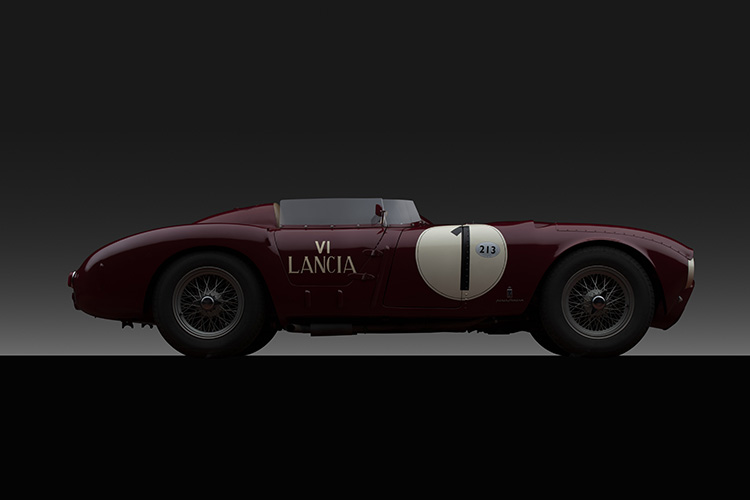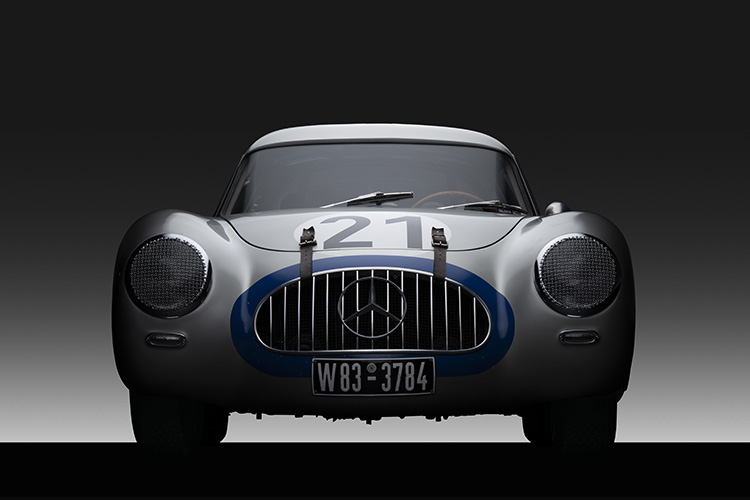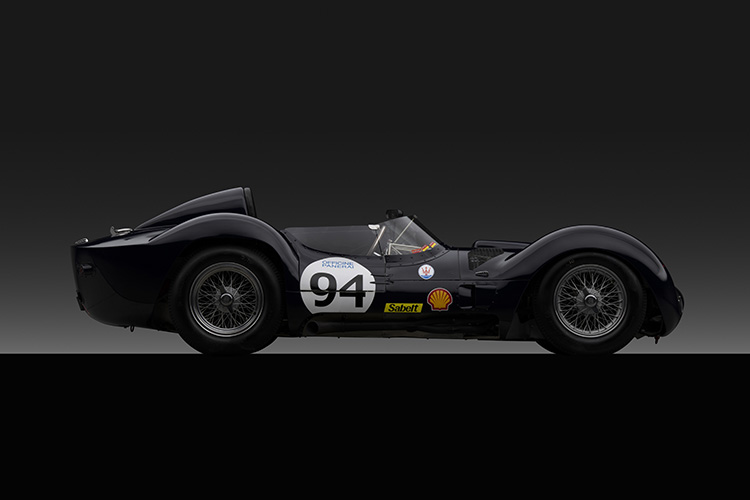Legends of Speed

Writer Shannon Severson
Photography by Bill Pack
[dropcap]A[/dropcap]merica has a special love affair with the automobile, but Arizona takes it a step further—becoming a hub for car enthusiasts and collectors with a plethora of auctions each year.
Phoenix Art Museum’s Legends of Speed is a landmark exhibition that brings the thrill of racing and its icons to life. Whether you’re an autophile, appreciate great design or just love a good story, you’ll find something that appeals in this impressive show, which runs through March 15.
This isn’t the museum’s first foray into displaying the artistic side of the automotive industry. Its 2007 exhibition, Curves of Steel, was extremely successful and focused on the impact of Art Deco style on car design in the 1930s and 1940s. This time, curators have gone full throttle into the world of racing.
“Displaying a collection of racecars is something we’ve never done before,” says Gilbert Vicario, Phoenix Art Museum’s deputy director for curatorial affairs and the Selig family chief curator. “We’ve taken it a step further to draw in the relationship of car and driver.
“Many of the cars we have on exhibit won very famous races in their time. They’re not similar to the cars that won, they’re the actual cars that won. They are really historic artifacts.”
Vicario points out that design and art have always been tightly wound and, as the automobile is a fairly new machine, it really is a defining feature of the 20th century that can be regarded for beauty in both sculptural form and technical aspects.
Each of the 20 vehicles on display is a piece of modern art. Placards alongside give information about the designers, and many tell the story of the drivers who pushed the limits of physics and human endurance to make these the first to cross many famous finish lines.
Ferraris, Fords, Deusenbergs, Porsches, Mercedes, Maseratis—the list goes on. Even standing still, these cars look fast.
Advances in racing design are detailed from the 1910s through the 1970s.
The oldest car on display is a 1911 Franklin, driven in the 1910 Desert Classic, an off-road race from Los Angeles to Phoenix before there were modern interstate highways. One can only imagine the dust, rocks and rough terrain that driver Ralph Hamlin must have endured for 500 miles when he finally rolled into town to place second.
Every vehicle had to be drained of all its fluids and carefully transported from personal collections and automotive museums across the country, including from Melani and Rob Walton and the Indianapolis Motor Speedway Museum—which loaned the car that racing legend A.J. Foyt drove to his first victory at “The Brickyard.”
Also on display is the sleek, blue 1967 Gurney Eagle F1—the first and only American-built race car to win a Formula One race in the modern era. Designer Dan Gurney gave this speeding bullet a beaked tip nose cone that evokes the American Eagle.
Gurney was constantly modifying his designs to make them faster and lighter, including exotic metal alloys like titanium and magnesium, which are highly flammable, but are part of the winning combination that made a name for America on the global racing stage.
With the recent popularity of the film “Ford v Ferarri,” audiences will recognize the style of the 1968 Ford GT40—a refined version of the car that Carroll Shelby built in the movie.
This version, developed by John Wyer, won the grueling 24-hour Le Mans twice––by a length of five laps when driven by Pedro Rodriquez (the first Mexican national to win at Le Mans) and Lucien Bianchi in 1968 and again in 1969, driven by Jacky Ickx and Jackie Oliver.
Just steps away is a famous 1929 Bentley, known as “Old Number One,” that accomplished the same feat many years earlier.
It looks impossibly huge to labor through 24 hours of rough roads in the French countryside, but Tim Birkin and Woolf “Babe” Bamato—a South African diamond heir—drove the twin SU carburetor vehicle to a win in 1929. The next year, Barnato partnered with “Bentley Boy” Glen Kidston to win it again.
However, the tales of talent aren’t isolated just to “the boys.”
“There are women who participated in racing, as well and I was thrilled to have a bit of gender balance,” Vicario says. “One of the contributors to the catalog is an actual living legend: Indy 500 Driver and author Lyn St. James, who used to live here in Phoenix.”
The exhibit prominently features the story of a particularly colorful female racer, Hellé Nice, also known as the “Bugatti Queen.” Her 1927 Bugatti Type 35B chassis 4863, which she drove in the 24-hour race at Le Mans in 1930, has rarely been displayed to the public. It had a top speed of 125 mph.
“She was quite something,” Vicario says. “She was a dancer and a model who posed for the artists of the day. In 1926, she was dancing in cabarets. Racecar driving was just one of her activities. Her life was quite fascinating.”
St. James wrote about the Parisian actress and model in one of the essays she contributed to the gorgeous, fully illustrated exhibition catalog, noting that Nice “makes Danica Patrick look like Snow White.”
“This Bugatti and Nice really represent an entire decade when there were females involved in racing,” St. James says. “When you have a great history, you have a great future. And this really was the beginning of that history.”
Every race and every racer tell an engaging human story—a story that is always changing. St. James points out that the cars are always being tweaked and altered, even during races.
As beautifully preserved and displayed at Legends of Speed, that evolution of design, the thrill of revving engines and tight curves and the desire to go farther faster has captured the imagination of generations and elevated the most skilled and daring to legendary status.
Legends of Speed
Through March 15 | See website for hours | Phoenix Art Museum | 1625 N. Central Ave., Phoenix |
$25 with discounts for seniors, students, children and museum members | 602–257–1880 | phxart.org



